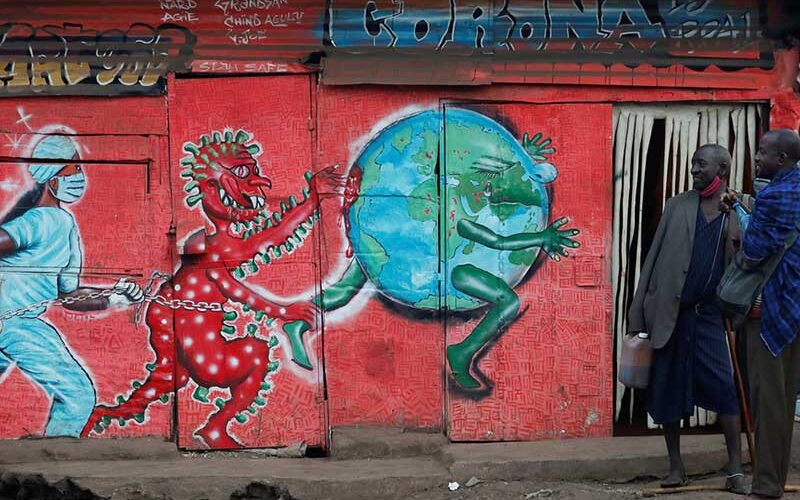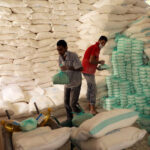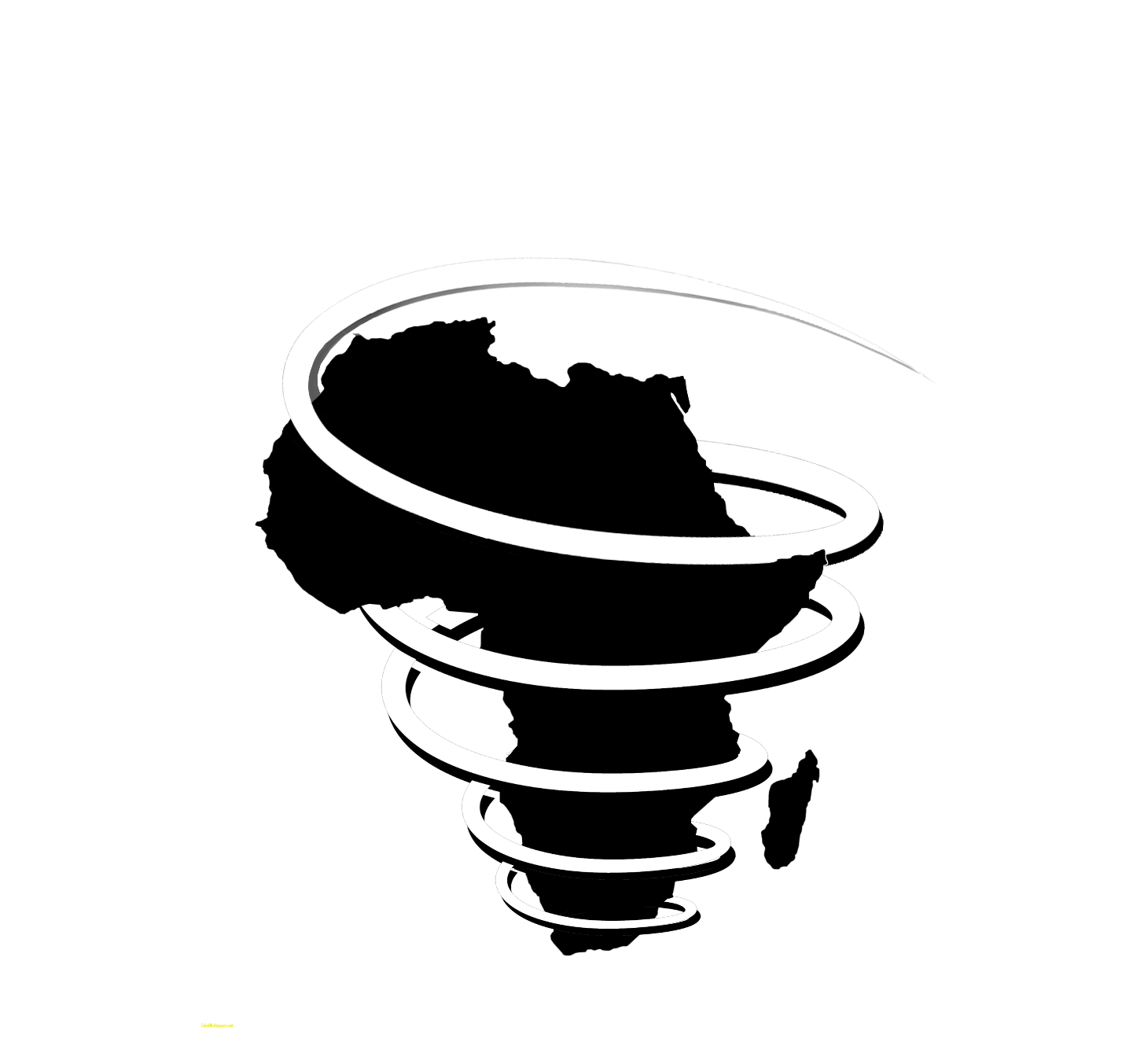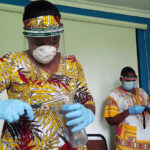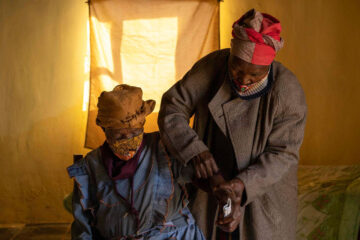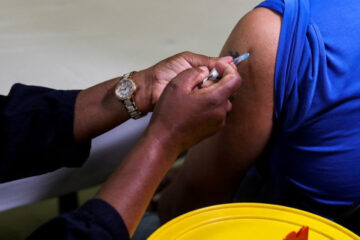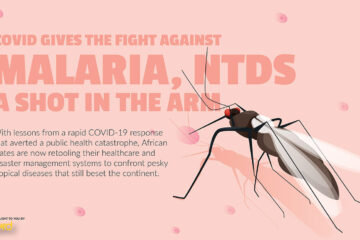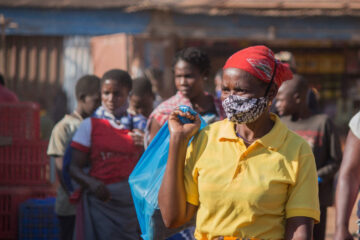OBI ANYADIKE
ALARM bells have been ringing for months that COVID-19 could push fragile African countries “closer to the abyss” of famine as jobs are lost, local markets close, and poverty deepens.
Aid agencies routinely list the coronavirus as a major factor in driving humanitarian needs, from the Sahel to Somalia, and don’t shy away from describing its impact as the “perfect storm”.
A joint report in July by the World Food Programme (WFP) and the Food and Agriculture Organization (FAO) calculated that COVID-19 could create an additional 121 million hungry people globally by the end of the year – mostly in 15 already crisis-affected African countries.
But as an increasing number of African countries ease their punishing lockdowns, ending restrictions on internal travel, relaxing curfews, and reopening schools, do these dire warnings still hold true?
“Honestly, I’m not convinced [by the numbers],” said one senior Nairobi-based aid official, who asked not to be named so they could speak freely. “Some of the scenarios by us were done back in March/April and were [calculated] on a much longer lockdown period.”
There have been alarming predictions of 6,000 to 12,000 daily deaths from hunger in the worst-affected countries by the end of the year.
But projections in April that a famine of “biblical proportions” is on its way thanks to COVID-19 may be overblown, according to aid workers and anecdotal evidence gathered by TNH reporting.
The aid workers pointed to the deeper, existing problems of conflict and economic crisis, and emphasised the need not to lose focus on those core issues.
“We’re trying to return to normal, but it will be a new normal,” said Jeremy Taylor, advocacy adviser for East Africa for the Norwegian Refugee Council. “Some of the development gains of recent years may have been lost, and we don’t know yet what the multilayered impacts of the pandemic will look like.

Counting the cost
The WFP/FAO figures were based on the numbers of people in pre-existing need as a result of war, climate change, and poverty – combined with early modelling on the likely impact of the pandemic.
That data drew on International Labour Organization estimates and assumed global coronavirus-related job losses would be permanent and that redundancies would accelerate through the year.
The good news – for reasons that at the moment remain unclear – is that Africa has escaped the first coronavirus wave relatively lightly. Despite infection rates in some countries of around 30-40 percent, recorded fatalities have remained remarkably low.
Six months into the pandemic, with lockdowns beginning to ease, The New Humanitarian spoke to six families in three countries – Kenya, Somalia, and Zimbabwe – to hear from them on how they were coping with the economic shock of COVID-19.
They had all been part of TNH’s award-winning Drought Diaries – a sixth-month series running from November 2019 to April 2020 that explored how families juggled their priorities to make ends meet in the face of climate change.
This time we wanted to gauge the extent of any post-lockdown recovery – and although the verdict was mixed, the testimonies and shopping basket data we gathered in August didn’t seem to tally with the apocalyptic projections of devastating hunger made by some aid agencies.
These accounts gathered by TNH are clearly limited. They can’t replace large sample size scientific polling. But because we have tracked the same households since November, their diaries do provide some context for the pandemic’s impact.
“Things are beginning to look up, with the easing of travel restrictions, but the situation remains very unpredictable,” said Ganda Farayi, a forklift driver in the Zimbabwean capital, Harare.
In the Somalian capital of Mogadishu, Yahye Yacqub, a part-time construction worker, was far more pessimistic. He told TNH that jobs had largely dried up as a result of the economic slowdown. Getting just one dollar “is a special day for me”, he said.
Only in Kenya was there cautious optimism about a relatively quick rebound.
“Things are beginning to look up with the easing of travel restrictions, but the situation remains very unpredictable.”
Benjamin Galwaha, a part-time pastoralist and shop owner, said he was “coping better” since the government eased restrictions in July. But for life to return to normal, “we are waiting for the president to open up all the public spaces,” he said.
Kenya, a middle-income country, is not one of the “hotspot” states identified by WFP/FAO at risk of starvation.
In all three of TNH’s drought diary countries, the cost of the family food baskets calculated in dollars had fallen by August in comparison to April – the last time all the households had been interviewed.
In Somalia, the families had saved by switching to the cheapest brands, while in Zimbabwe both were paid in dollars, a partial hedge against an inflation rate of more than 800 percent and a dizzyingly depreciating local currency.
The interviews point to the bruising experience of COVID-19 – with families losing income, and cutting back on food or school fees expenditure to see them through the difficult months.
“We must be cautious in using hyperbolic language,” noted Taylor of the NRC. “But we do need to recognise the economic hit of the coronavirus, and its impact on vulnerable people.”
However, aid workers pointed to longer-term structural problems – beyond COVID-19 – as the main drivers of risk in the African countries identified by WFP and FAO.
In South Sudan, for example, “it’s not COVID-19 that has driven people into extreme poverty, it’s the culture of violence among the political elites and the high level of corruption,” said Edmund Yakani, head of Community Empowerment for Progress, a local NGO.
In northeast Nigeria, “it’s the insecurity [as a result of Boko Haram violence] that is the major driver of needs, and this year won’t be any different,” Hussaini Abdu, Nigeria director at Plan International, told TNH.
There is “no harm in preparing for the worst”, said the aid official quoted earlier, but they then criticised some in the aid world for “jumping on [COVID-19] bandwagons”.
What the evidence suggests instead, is “we need to get our focus back to the existing conflict/disaster settings”.
But while the continent may not have experienced the worst of the pandemic, it has been painful enough. The region may be entering its first recession in 25 years, and although already facing a “debt quagmire”, will need $1.2 trillion through to 2023 to repair the COVID damage.
Government social protection schemes to cushion the poor have proved inadequate, and survival has largely depended on people’s resilience and the durability of the informal economy, research suggests.
An increase in gender-based violence, child marriage, and teenage pregnancies have been the additional social costs of the pandemic.
Locking down the poor
Given the weakness of Africa’s health systems, governments were quick to lock down their citizenry.
By mid-April, at least 42 countries had ordered partial or full stay-at-homes, even though the region’s total COVID-19 cases at the time were under 22,400, with less than 900 recorded deaths.
That may have helped slow the virus, but the economic hit was almost immediate.
In a study in June of low-income neighbourhoods in Nairobi, virtually everyone said their lives had been affected by COVID-19.
More than two thirds had seen a reduction in earnings – forcing them to borrow or dip into savings – and over 20 percent said they were facing increased hunger, reflecting the results of the TNH drought diaries.
Surveys in Ethiopia had similar findings, with more than half of households – typically those already poor – reporting losses of income and “very high” stress levels.
But the lockdowns have not been uniform in their impact across the continent. More developed regions – typically northern and southern Africa – have tended to impose the most stringent measures, according to the UN’s Economic Commission for Africa.
“Most people are trying to find jobs, and jobs are not forthcoming so people are still struggling.”
In Ethiopia, where government restrictions were relatively light, the initial COVID-19 shock was only “temporary”.
By August, “most households were able to cope relatively well”, drawing on savings or income from the government’s safety net programme, according to the Washington, D.C.-based International Food Policy Research Institute.
In Kenya, “I’ve been shocked by the resilience of people – especially women,” said Carol Sakwa, head of programmes at Shining Hope for Communities, a grassroots NGO.
“But most people are trying to find jobs, and the jobs are not forthcoming, so people are still struggling.”

